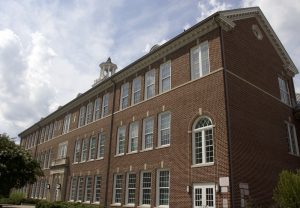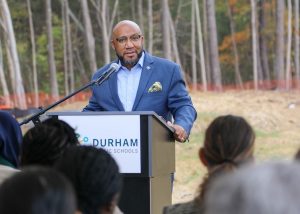For over a decade, North Carolina has issued vouchers to help families afford private school tuition. But this year, the number of affluent recipients surged after lawmakers removed income limits, opening applications to all families.
In Durham County, 44% of students who were awarded scholarships this year would have previously been ineligible due to higher family income, according to February data from the North Carolina State Education Assistance Authority. In Wake and Orange counties, the numbers are even higher. In those counties, 66% and 58% of recipients, respectively, would not have qualified under previous rules.
As a result of the looser requirements, scholarship applications surged, according to data updated on April 7. North Carolina awarded 80,461 private school scholarships for the 2024-2025 school year at a cost of nearly $431.7 million—up from 32,549 scholarships totaling $185.6 million the previous year.
In Durham, the number of families awarded Opportunity Scholarships more than doubled, increasing from 1,009 students last year to 2,061 this year. Scholarships for Durham families this year totaled $11.6 million.
Supporters say the change expands access to private education. But critics—including public school boards and Democratic lawmakers—argue it diverts taxpayer dollars from public schools.
Who gets the scholarships?
Republican lawmakers created the Opportunity Scholarship in 2013 to help low-income families afford private schools. But two recent changes fueled a surge in applications: income caps were eliminated, and students already enrolled in private schools could apply.
Wake County awarded 10,541 private school scholarships, the most in the state, followed by Mecklenburg County with 7,878 scholarship awards.
Applicants are placed into four income tiers, and awards range from approximately $3,000 to $7,000 per student, depending on family income. Families in the lowest tiers receive priority. For the 2024-2025 school year, the tiers for families of four were:
- Tier 1: Families earning $57,720 or less
- Tier 2: Families earning $57,720 to $115,440
- Tier 3: Families earning $115,440 to $259,750
- Tier 4: Families earning more than $259,750
Previously, only families in the two lowest tiers were awarded scholarships.
Demographically, 73% of this year’s scholarship recipients statewide were white, while 11% were Black. The state authority categorizes Hispanic as an ethnicity rather than a race, and 10% of recipients identified as Hispanic.
Supporters argue that scholarships give parents more choices and expand access to private education.
But Democratic lawmakers have called the program “welfare for the wealthy,” and in February, the State Board of Education urged lawmakers to pause the program’s expansion.
In Durham, where public schools already face funding shortages, the scholarships have fueled frustration.
“It’s a deliberate slap in the face to public school educators, families that choose public schools, and the district as a whole,” said Millicent Rogers, chair of the Durham Board of Education. “When the state is not investing in public school systems, the infrastructure begins to fall apart. Educators can’t be paid as much. Class sizes tend to be larger. The HVAC goes out and roofs start leaking.”
“Local school systems are still waiting for the state to invest in them and to believe in them,” she continued.
What’s Next?
For the 2025-2026 school year, 40,089 students statewide applied by March 6. That figure doesn’t include current scholarship students who can reapply for next school year. Eligible families have until April 18 to accept or decline their Opportunity Scholarship awards.
The application remains open, and awards will be distributed as long as funds remain. Families will be notified by late May if they receive an award.
Above: Graphic by Storey Wertheimer. Data source: North Carolina State Education Assistance Authority





